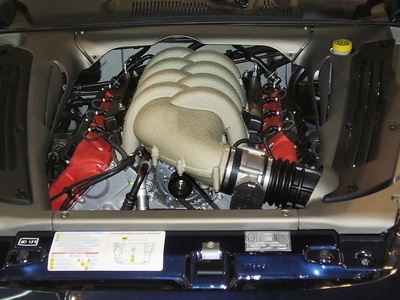
An engine's thermostat operates off the temperature of the engine coolant. When the coolant reaches a certain temperature the thermostat opens, allowing coolant to circulate between and through the engine and radiator. When the temperature drops the thermostats closes, restricting the coolant flow, raising the engine's operating temperature. Through this process the thermostat keeps the engine operating within a specified temperature range for optimum performance. If the thermostat becomes faulty it will fail to operate, causing numerous problems including overheating, rough running or decreased heater output. As thermostats operate off the temperature of the surrounding liquid, the easiest way to test them is with a pan of hot water.
Remove the radiator cap, after the engine is cool, to relieve any internal pressure.
Remove the thermostat housing cover with the socket wrench and remove the thermostat from the housing.
Read the temperature rating on the thermostat. This is the number of degrees the thermostat is designed to open at.
Fill the sauce pan with warm water and put the thermostat in the pan. Place the pan on the stove to heat.
Place the thermometer in the pan of water. When the water temperature reaches the temperature rating for the thermostat, the thermostat should open. If it does not, the thermostat needs to be replaced.